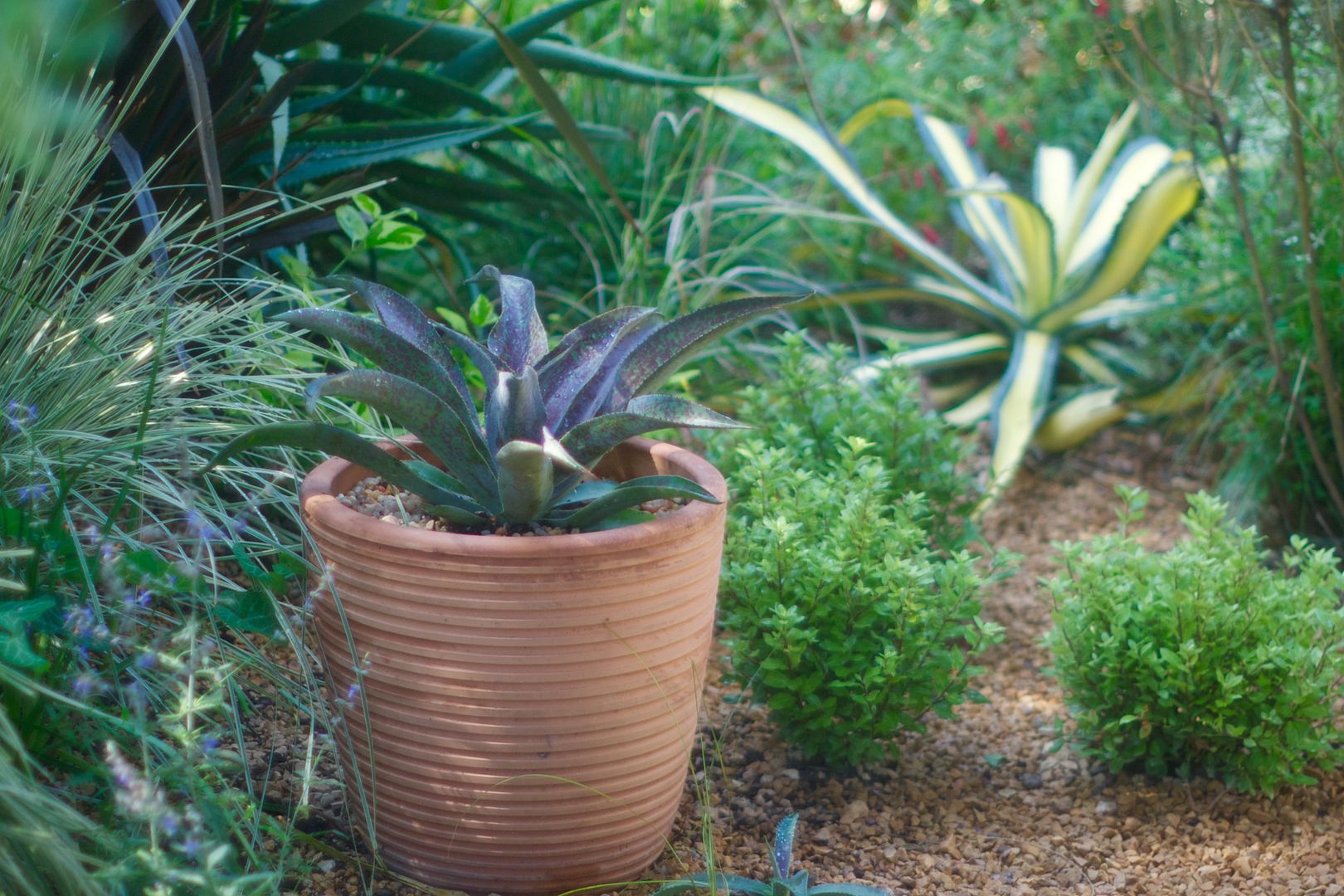
It always amazes me how what was just hours before a scene of mayhem in the garden can look so calm and serene just a few moments after the mulch settles. Right where those little Pittosporum tenuifolium ‘Beach Ball’ now reside (hereafter referred to as “the pitts”), I was getting a lot of tetrapanax shoots. I know I’ve always asserted that tetrapanax does not travel in my clayish soil, but this summer it packed its bags and hit the road in a big way, mainly exploring this little area around Phylica pubescens, a good six feet away from the mother plant.
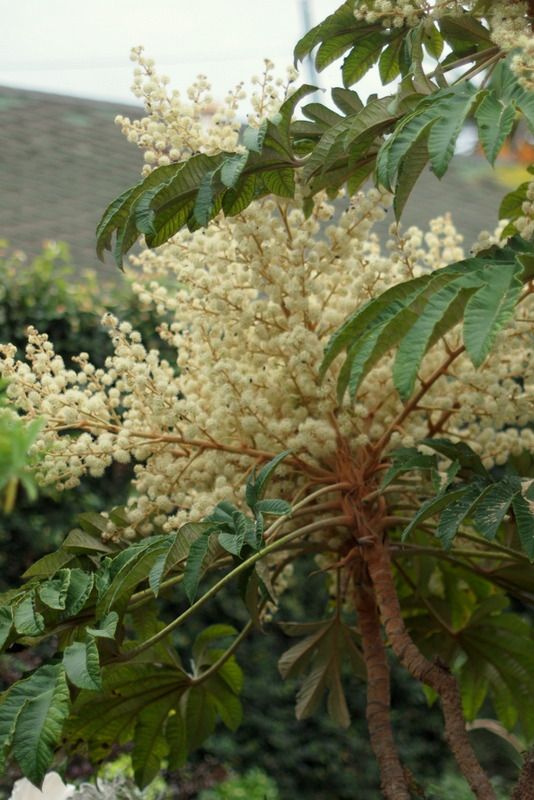
no flower buds formed yet this year
Once a wandering Rice Paper Plant shoot is pulled up, it seems to lose its fighting spirit and doesn’t return, but others kept sprouting up nearby. So that was one issue with the otherwise happy story I told myself about this part of the garden.
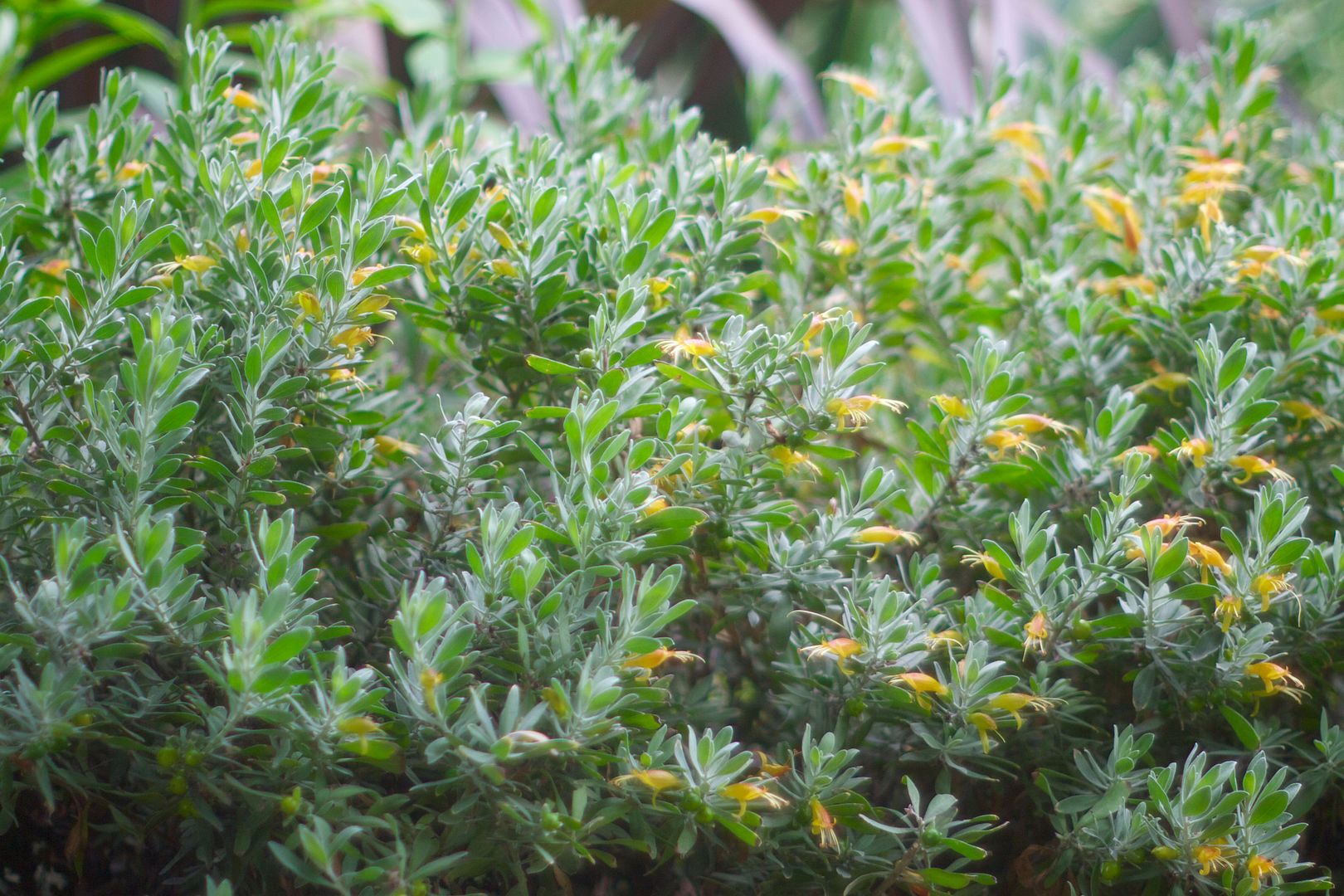
The other issues in this same area were my two Eremophila glabra ‘Kalgoorlie,’ the Grey Emu Bush, wonderful shrubs not yet widely grown locally, about which I have nothing but good things to say. They were planted where the pergola ends and garden begins. Like a lot of plant experiments, I had no idea if they’d like my soil or full sun in a very dry spot, but they flourished. I kept telling myself I loved peeking over and around their swiftly attained 4-foot size to view the garden behind, that it was a bulwark of cool grey solidity the busy garden demanded. And there were many other vantage points to the east and west from which to view what grew behind them, I reasoned. Blocking the full view made it all that much more mysterious, or so the story went.
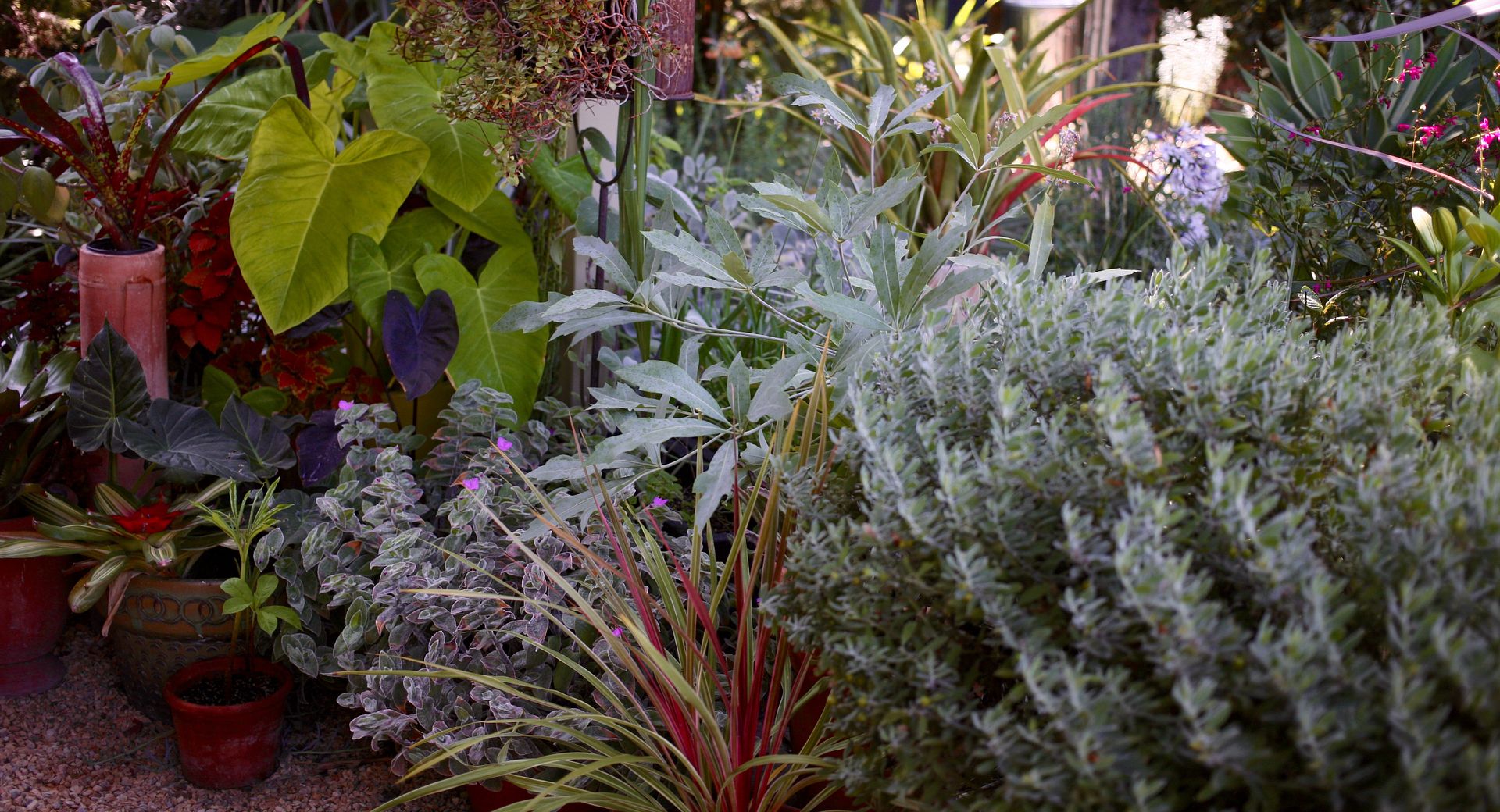
So I continued to clip the Grey Emus in hopes their legginess would be corrected and they’d leaf out more at the base and I’d end up with slightly smaller, denser, perfectly spherical silver orbs that would make even Nicole de Vesian happy. Because somewhere along the way, I think Nicole became a character in this story too. And then I decided to hedge my bet (pun intended!) and plant bergenia in front of the Grey Emus to hide their legginess.

My love for all things shrubby sometimes gets out of hand
And I tried not to notice how, even with all that clipping, the Grey Emus were steadily encroaching on the Featherhead Bush Phylica pubescens, which is arguably more valuable because more difficult to keep alive. In the meantime…
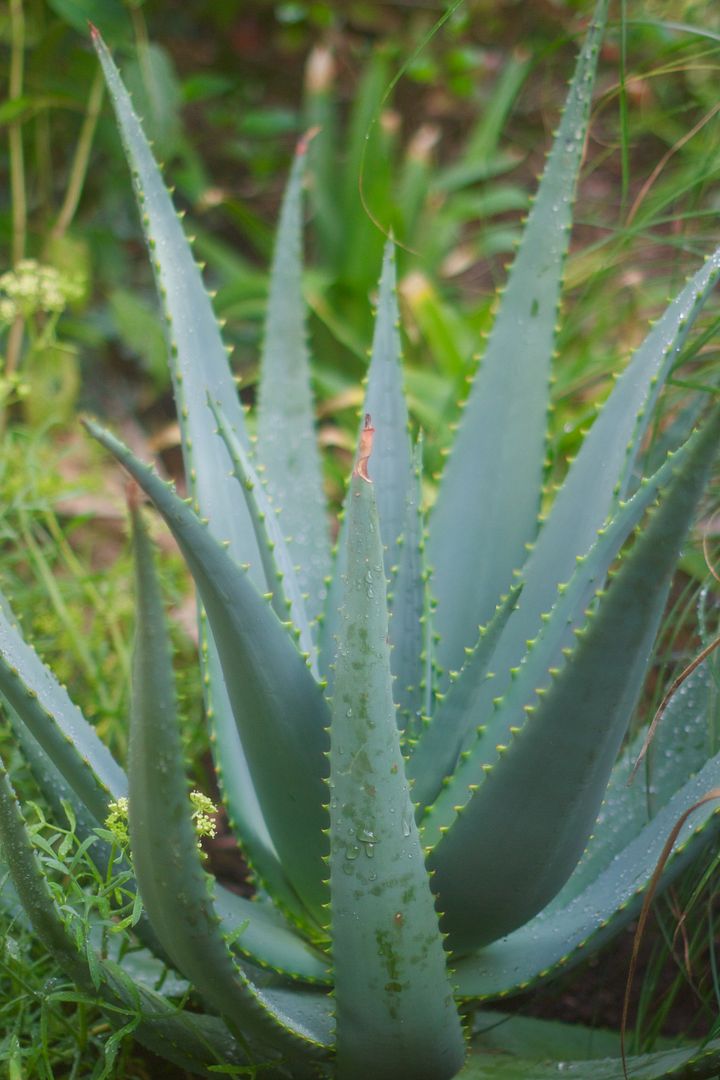
Will it be settled in enough to bloom this winter?
In the second week of September I attended the APLD Plant Fair at the LA Arboretum, which was just as excellent as the inaugural event the year before. Speakers all day and nursery booths filled with gorgeous plants and knowledgeable people to talk with about them. And this is where I learned of a dwarf Westringia fruticosa called ‘Grey Box,’ that was born doing exactly what I wanted the eremophila to grow up to do. So that got me thinking that I might just possibly be on the wrong track with the Grey Emus. As I said, in front of the Grey Emus I had planted a couple of bergenia, not a common plant anymore, which made me feel very close to Beth Chatto and other champions of the Pig Squeak. (Beth is always a part of any dry garden story.) Bergenia particularly shines in winter here, but unfortunately looked like crap all summer, getting way too much sun and showing leafburn.
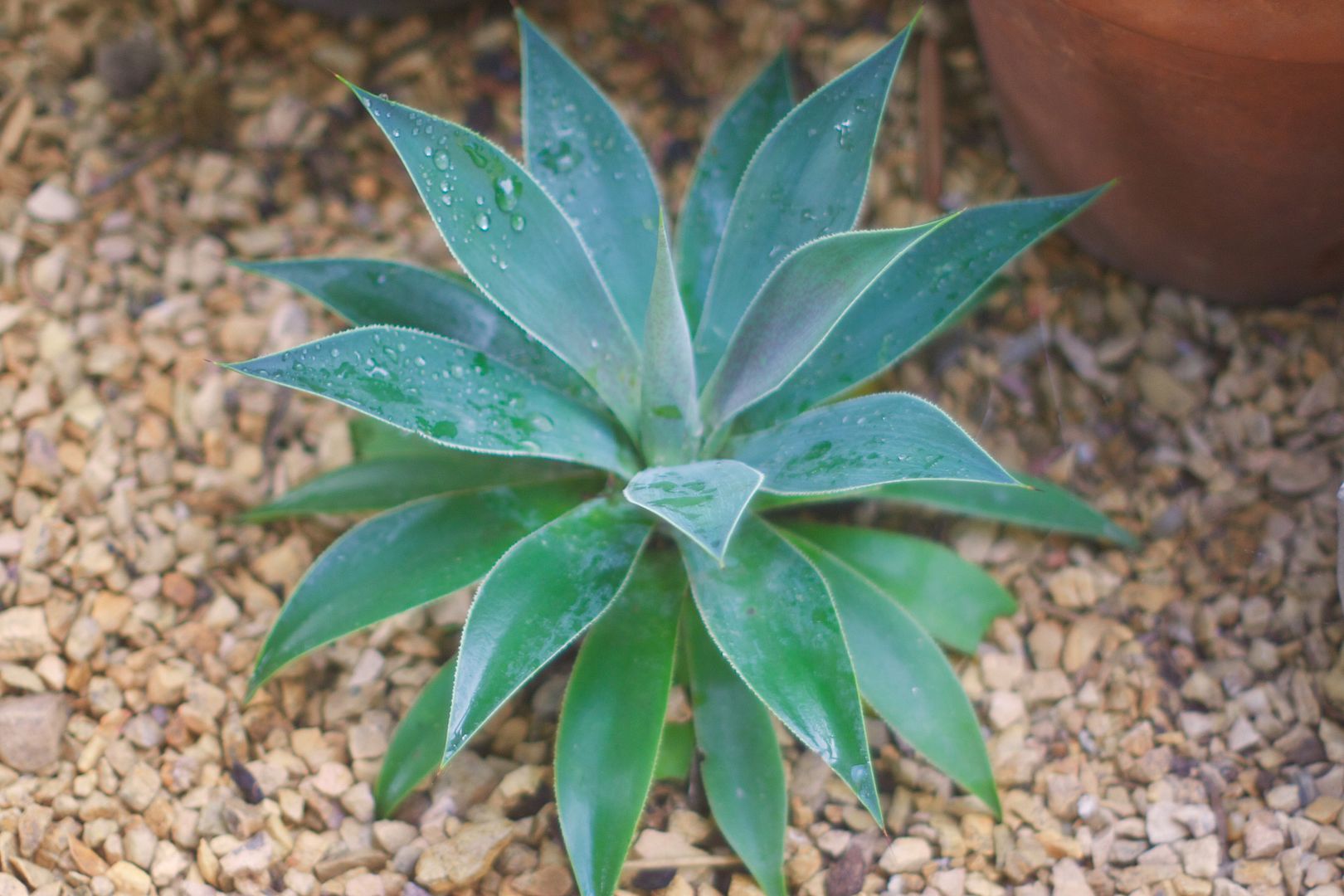
So the story I was telling myself about the eremophila and bergenia started showing some cracks. I was losing faith in the story. I checked out the local nursery in the offchance the dwarf westringia was waiting for me there. It wasn’t, but there were some fine looking ‘Beach Ball’ pitts.

I’ve noticed that once I admit that the garden story I’ve been telling myself might possibly have a significant flaw, when I decide to act I don’t waver. Out came the eremophila (which couldn’t be salvaged), out came the bergenia (which was moved into shade under Grevillea ‘Moonlight’), out came an enormous, snake-like tetrapanax root, in went the pitts, and then out I went once more to pick up more crushed rock for mulch, where I found a nice specimen of Mangave ‘Mission to Mars.’ I knew it would take something this beautiful to make me forget the old story about the eremophila and commit to a new one.
(And all I can say to anybody who thinks plants cannot really support such belabored narratives, you really need to check out My Favorite Shapes — paraphrasing from Julio, “I just need to show my plants. That’s all this is for.”)

The story is a good one, so is well worth the telling. The weighing and re-weighing the virtues and vices of a plant goes on constantly for anyone who pays attention to plants, doesn’t it? We are as Gods in our little patch of planet.
I got rid of all the Eremophilas except one too small and weak to be an issue–they were not impressive, though I was so willing to be impressed.
The weighing and reweighing go on here about ‘Swanes Golden’ Cypress. Reduce fire danger and rodent population, or continue to relish golden beauty? Over and over in my mind, what to do, what to do.
Lovely scene, that Phylica and Phormium together. I think you said you are trimming the Phormium base to keep it in line? And so it goes.
Hoov, this eremophila is an exceptionally good plant for a larger garden — I’m starting to say that a lot lately! That’s a tough internal debate over the golden cypress. At least they’re not the most flammable tree out there: “Across the board, all the characteristics they saw in the cypress trees indicate that they’d help fight wildfires of moderate intensity. The tree’s needles and dead litter that falls to the ground are spongy and hold water for a long time, for one. The widely-spaced structure of the tree’s crown slows down air circulation, and the space between its branches reduces the speed at which a fire spreads. Cypress sap also happens to be less flammable than the resin from other trees.” (https://www.smithsonianmag.com/innovation/can-cypress-trees-help-suppress-wildfires-180956597/)
I wonder if the plentiful rain this past winter into spring unleashed the self-seeding proclivities of the Tetrapanax? My formerly well-behaved Symphyotrichum chilensis unexpectedly ran amok this year too. I have/had 2 Eremophilas. The prettier of the 2 finally seems to have given up the ghost after a pathetic performance over the past 3 years. The second E. glabra increased in size at last, probably in response to the afore-mentioned rain, but it’s still unimpressive. My entire garden needs a face-lift but I can’t bring myself to deal with it until the chaos of this remodel is well behind me.
In my (limited) experience digging around a tetrapanax will cause it to send out pups, so don’t be alarmed if you get a few more…
Sometimes you just have to mull over a grouping before finally taking action. I find Fall a great time to rip stuff out as it has stopped flowering and I feel less attached to it.